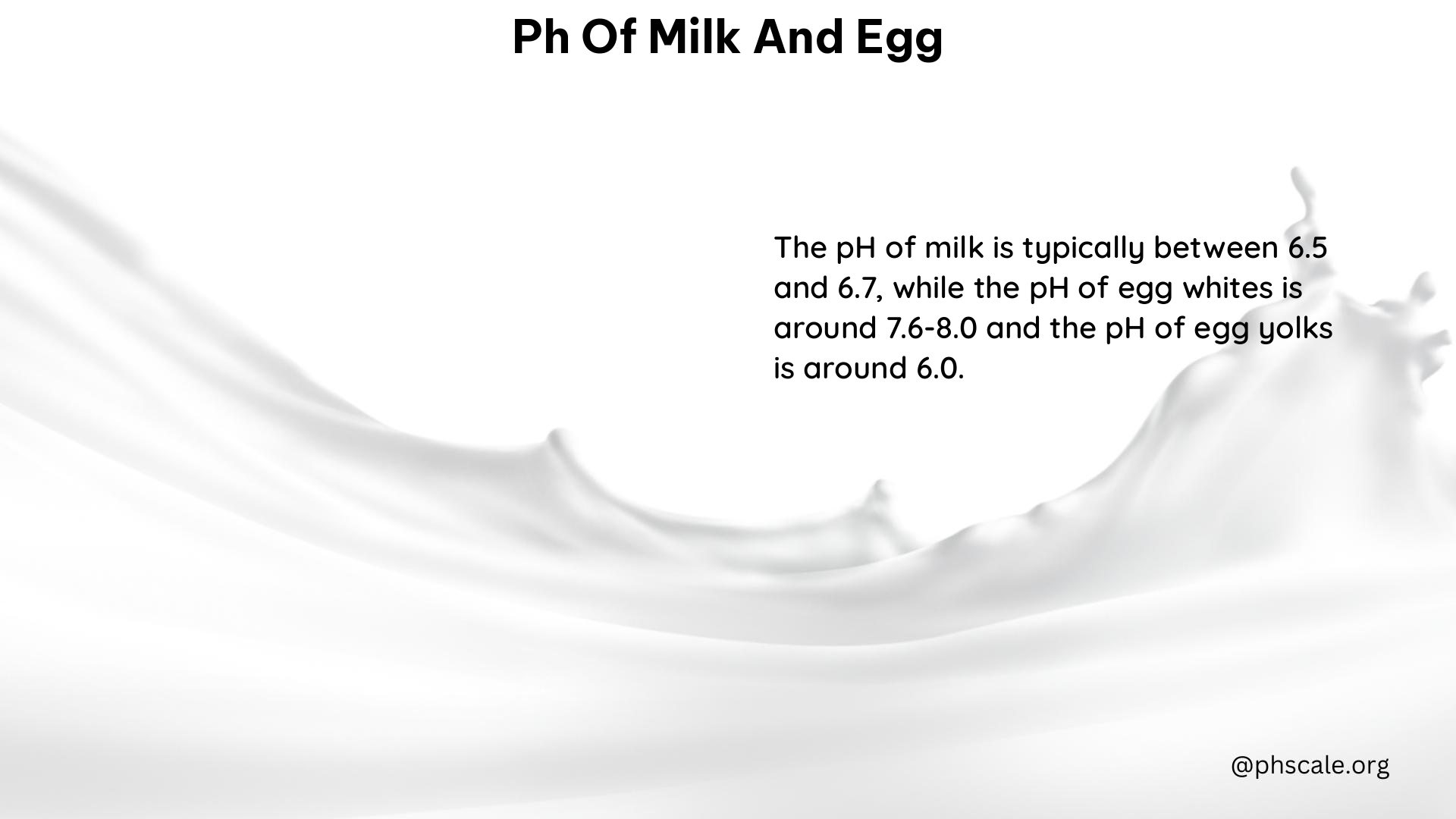The pH values of milk and egg are crucial in understanding their properties and how they interact with other substances. Milk, a staple in many households, has a pH range that varies depending on the type, while eggs, a versatile ingredient, exhibit different pH levels in their components. Exploring the pH of these common food items can provide valuable insights into their behavior and applications.
pH of Milk
Whole Milk
The pH of whole milk typically ranges from 6.40 to 6.90, indicating a slightly acidic nature. This pH range is influenced by various factors, including the cow’s diet, lactation stage, and the processing methods used.
Condensed Milk
Condensed milk, a concentrated form of milk, has a pH of approximately 6.33, slightly lower than that of whole milk.
Evaporated Milk
Evaporated milk, which undergoes a more intense heating process, has a pH range of 5.90 to 6.30, slightly more acidic than whole milk.
pH of Egg

Egg White
The pH of egg white is alkaline, ranging from 7.6 to 9.2, with an initial pH of around 7.8. This alkaline nature is due to the presence of proteins and other compounds in the egg white.
Egg Yolk
The pH of egg yolk is around 6.0 initially and increases to 6.4 to 6.9 during storage. The yolk’s pH is more acidic compared to the egg white.
Whole Egg
The pH of a whole egg, considering both the white and the yolk, is approximately 6.58, slightly acidic.
Factors Influencing pH
Storage Conditions
The pH of eggs can be influenced by storage conditions. Refrigerated storage, for example, can slow down the pH change in eggs, helping to maintain their quality and freshness.
Age of the Hen
The age of the hen at the time of lay can also impact the pH of the egg. Older hens may produce eggs with a slightly higher pH.
Balancing pH
Adding Cream of Tartar
In egg whites, adding a small amount of cream of tartar can help lower the pH and stabilize the foam, which is important in various baking and culinary applications.
Contaminants and Chemicals
Bacterial Contamination
Milk and eggs can be susceptible to bacterial contamination, such as E. coli and Salmonella, which can alter their pH levels and pose health risks.
Additives and Preservatives
The pH of milk and eggs may also be affected by the addition of various additives and preservatives, which are sometimes used to extend their shelf life or enhance their properties.
Home Remedies and Alternatives
Natural Preservatives
Using natural preservatives like lemon juice or vinegar can help maintain the pH balance of milk and eggs, providing a more natural and healthier alternative.
Proper Storage
Storing milk and eggs at the appropriate temperatures and conditions can also help preserve their pH levels and overall quality.
History
pH Measurement
The concept of pH was first introduced by Søren Sørensen in 1909, revolutionizing the understanding of acidity and alkalinity in foods, including milk and eggs.
In conclusion, the pH of milk and egg is a crucial factor in understanding their properties, behavior, and interactions with other substances. By exploring the specific pH ranges of these common food items, we can gain valuable insights into their applications and develop better strategies for their handling, storage, and use in various culinary and industrial settings.
References
- Clemson University. (n.d.). pH Values of Common Foods and Ingredients. Retrieved from https://www.clemson.edu/extension/food/food2market/documents/ph_of_common_foods.pdf
- Byju’s. (n.d.). The pH of milk, black coffee, tomato juice, lemon juice and egg white are 6.8, 5.0, 4.2, 2.2 and 7.8 respectively. Retrieved from https://byjus.com/question-answer/the-ph-of-milk-black-coffee-tomato-juice-lemon-juice-and-egg-white-are-6/
- Science Madness. (2011). Is milk acidic or basic? Retrieved from http://www.sciencemadness.org/talk/viewthread.php?tid=18221
- PickYourOwn.org. (n.d.). pH of Eggs and Dairy. Retrieved from https://www.pickyourown.org/pH-of-dairy-eggs.php
- American Egg Board. (n.d.). pH Stability. Retrieved from https://www.incredibleegg.org/professionals/manufacturers/real-egg-functionality/ph-stability/.
